As ever, ICCB was a whirlwind of people, information and ideas. If you weren't able to join us at ICCB, the highlights from the talks and workshops at the conference were captured fairly well over on twitter. To get a snapshot of the tech relevant talks, I recommend scrolling back through the twitter feeds of WILDLABS and the SCB Conservation Tech Working Group.
My favourites included Laure Joanny who shared her thoughts on why we need to pay more attention to time, people and skills when implementing fast new #tech4wildlife, Chris Sandbrook who talked about the ethical and social implications of surveillance tech in conservation, and Natalie Schmitt, who walked us through her team's portable detection device and shared their proof of concept with snow leopards.
Outside the formal presentations, it was fantastic to see a demo of Harold Tay's passive underwater acoustic device, chat with Aparna Akula and Prithvi Raj Narendra and uncover some possible avenues for collaboration on HWC, check out new kit from Conservify, Arribada and Audiomoth, and to end the conference with a last minute special delivery from Rob Appleby's Equipment Swap Meet.
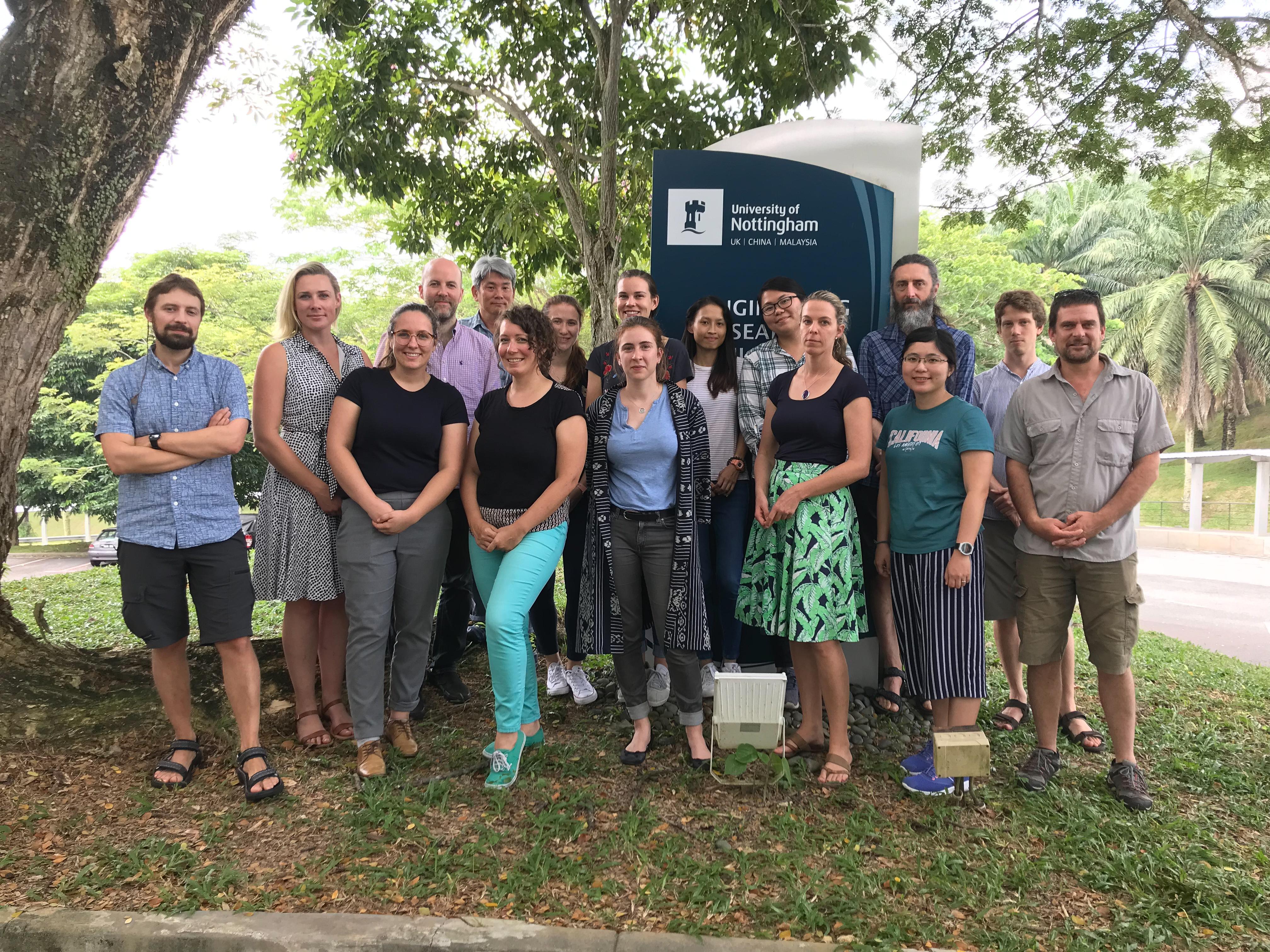
The Future of Conservation Tech Think Tank: highlights included models for building communities around tool development, discussion about involving users in design, building capacity to use available tech and ensuring a diverse group can contribute to innovations.
With this in mind, rather than a detailed rundown of all the tech related events and conversations from the conference, I'm going to use this space to pull out five key discussions I heard during the week. Although we touched on many topics (see below for our Go Long discussion board), these five stood out for me because they align with key areas of interest we're seeing the broader community coalesce around. These points pull in ideas that have been expressed by many different voices not only at ICCB, but in our discussion forums, virtual meetups, workshops and through the annual Community Survey.
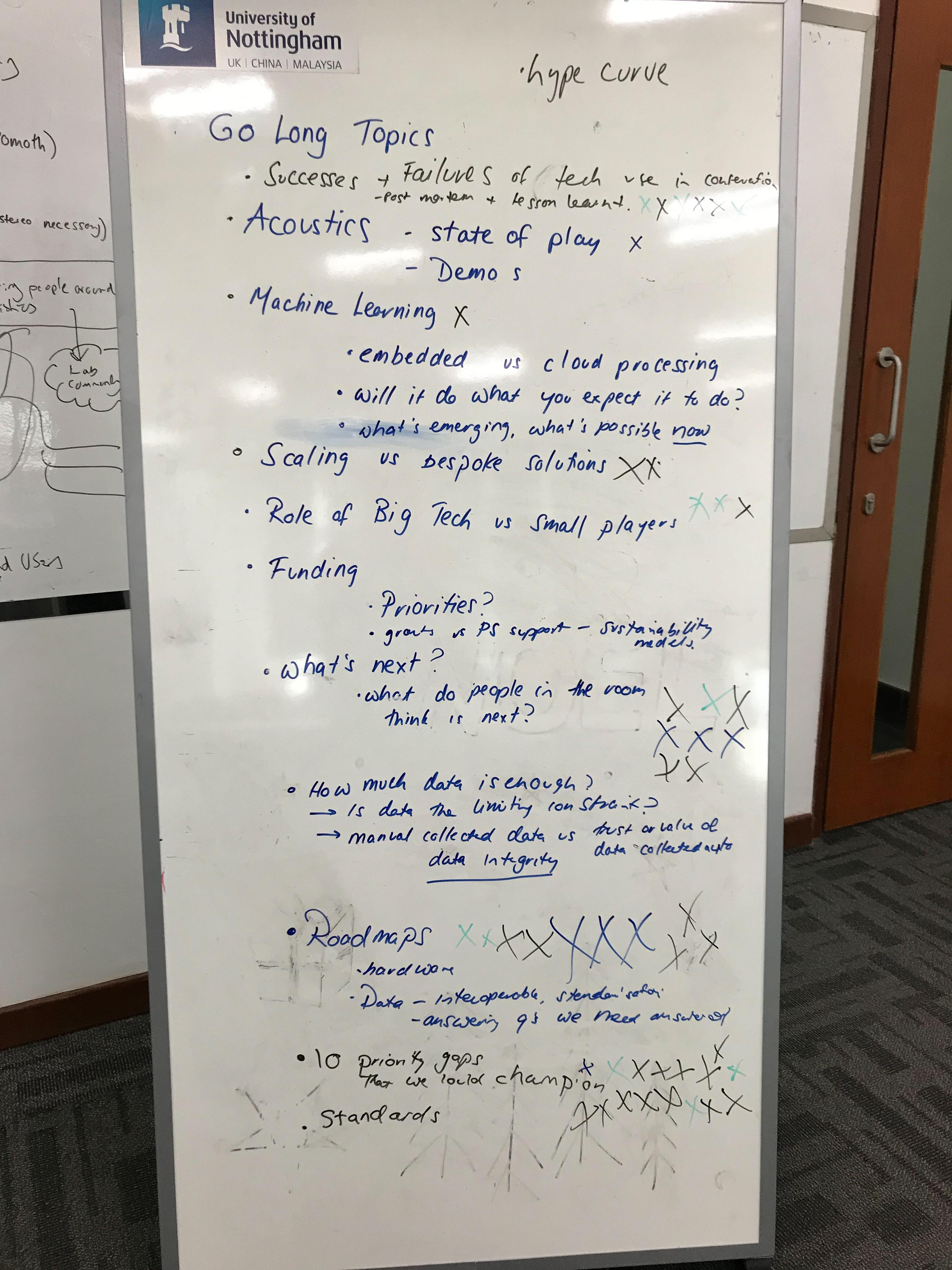
The Go Long topics raised in the Future of Conservation Tech Think Tank
1. ‘Conservation technology tools are not like washing machines'
When we ask field users of tech about their needs, various wish lists for new/better/cheaper tech do get a mention, but the focus tends to be on how to build capacity for teams to use the technology already available more effectively. This was evident in our most recent WILDLABS Community Survey, where we asked field users to rank key constraints they face using tech. Of the top five constraints, three related to capacity and training gaps:
- Costs of technology
- Organisational capacity insufficient
- Staying up to date with best-practice approaches
- Tech performance / available tech doesn't meet my needs
- Access to training
This capacity gap and how to effectively support field users of conservation tech was a common theme in discussions throughout the week. A quote from Laure Joanny's talk captures the challenge neatly:
'SMART is a process, it's not like if I'm selling you a washing machine, I can just direct deliver the washing machine to your house, demonstrate once how it works, give you the user manual and then I can forget about it'
Anti-poaching advisor
Offering ongoing technical support is a huge barrier for start up conservation tech tools and indeed, even for established tools. There was clear consensus that one-off training sessions, usually run when a new technology is introduced, are not enough to build the necessary capacity. So how do we address this? Ideas included:
- 'Communities are huge for delivering technical support for conservation tech. But considering these solutions as full products is also critical - a piece of tech is not a product without the ability to use, deploy, troubleshoot, etc. A product mindset delivers' – Paul Bunge
- 'Perhaps even leveraging collaborative partnerships and integration with folks who are handling tech support work in the future (cough cough @conservify)' - Shah Selbe
- 'Do we need a skills exchange network or conservation tech sabbaticals? There is huge value in just moving people around, and having someone on the ground you can ask questions of’ – Workshop Participant
- 'We need to move better and faster at real time data decision making to respond to the scale of our threads. Barriers fo adoption of such tech, can we come up with a clever way to increase capacity on the ground? Travelling mentors? - Anon Feedback in Community Survey
- 'We need, practically speaking, more cookbooks, ways to keep up and quickly get to grips with/use new things!' - Anon Feedback in Community Survey
- 'We need technical specialists who can provide unbiased mentorship and handholding to community members through a range of problems. Tech support for conservation' - Anon Feedback in Community Survey
Laure Joanny shares there is a critical part of any conservation tech deployment or anti-poaching tech that often gets forgotten: the burden on the user.
2. How do we get better at sharing failure?
Whether it's building tech or deploying it in the field, the moments when things go awry are where often the most helpful lessons are learnt. How do we get better at sharing the failures and the lessons that go along side them? Effectively sharing failures is valuable for everyone - it offers tech manufacturers valuable information they need about equipment malfunctions and associated conditions, developers and innovators ideas about the existing performance gaps, and can offer conservationists information about best practice so they select the right tools and use them efficiently, avoiding the same mistakes. But how do we get better at sharing tech failures and sharing them more often?
Suggestions included:
- Starting a new hashtag similar to #fieldworkfails (ideas thus far: #fieldtechfail, #constechboopers or #constechfails - add your suggestions here).
- Establishing a discussion thread with a standard set of questions to surface failure examples and foster a culture of safe sharing.
- Building a searchable portal of detailed case studies in the vein of Naturewatch: Lessons from the field of app development, and Getting SMART in Cambodia.
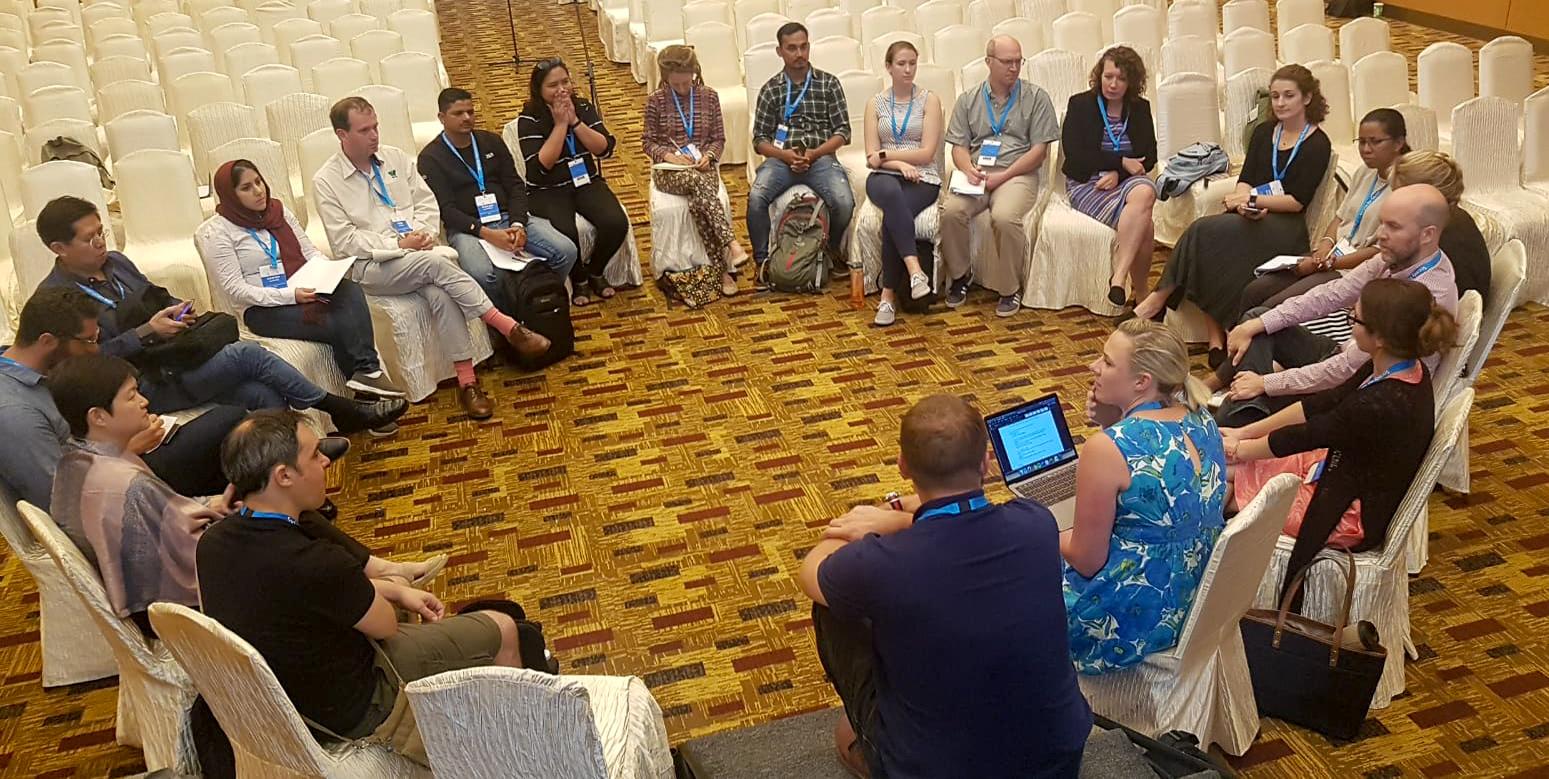
During the conference we also held a workshop focused on open source technology, where participants shared their insights about challenges they face day to day getting access to reliable tech and where they saw open source playing a role. Failure as a mark of success in the tech industry was a important point that come up in discussion.
3. Cutting through the hype: What's emerging vs what's possible now?
Conservationists are asking for help to sort through the hype around new and emerging technologies. A common complaint I hear is that it is difficult to sort through available information and figure out what is just hype, what is on the horizon and could have potential, and what is actually possible right now. This overwhelm of information carries significant cost. At one end of the scale it can lead to resources being sunk into shiny tech that isn't necessarily ready for conservation applications, and at the other end it can lead to paralysis because it's just easier to keep doing things the same way. Either way, we're missing opportunities to improve efficiency in how we use limited conservation resources.
So how can we help conservationists filter this information more effectively and figure out:
- What is on the horizon, what do I need to be aware of that's coming down the pipeline?
- What is possible right now? What is worth me investing time/resource into?
One suggestion looked to the hype cycle for emerging technologies, a model that Gartner developed to map the maturity of specific technologies through five phases (see below, and here). Producing a similar hype cycle for conservation technologies could provide quick way to help conservationists dip in and find answers these questions.
Although this could be something produced by an experienced tech advisory board in a workshop or virtual meetup scenario, an easy first step is for this to be a collective exercise we undertake in the WILDLABS community. I've run a similar exercise with Masters students at Cambridge University, asking them to map technologies they have experience in using against a blank curve and it acts as a fantastic conversation starter, prompting them to share experiences using technologies and debate their assessments of how useful the technology is verse expectations. This activity could also complement some of the points around encouraging sharing in discussions one and two.
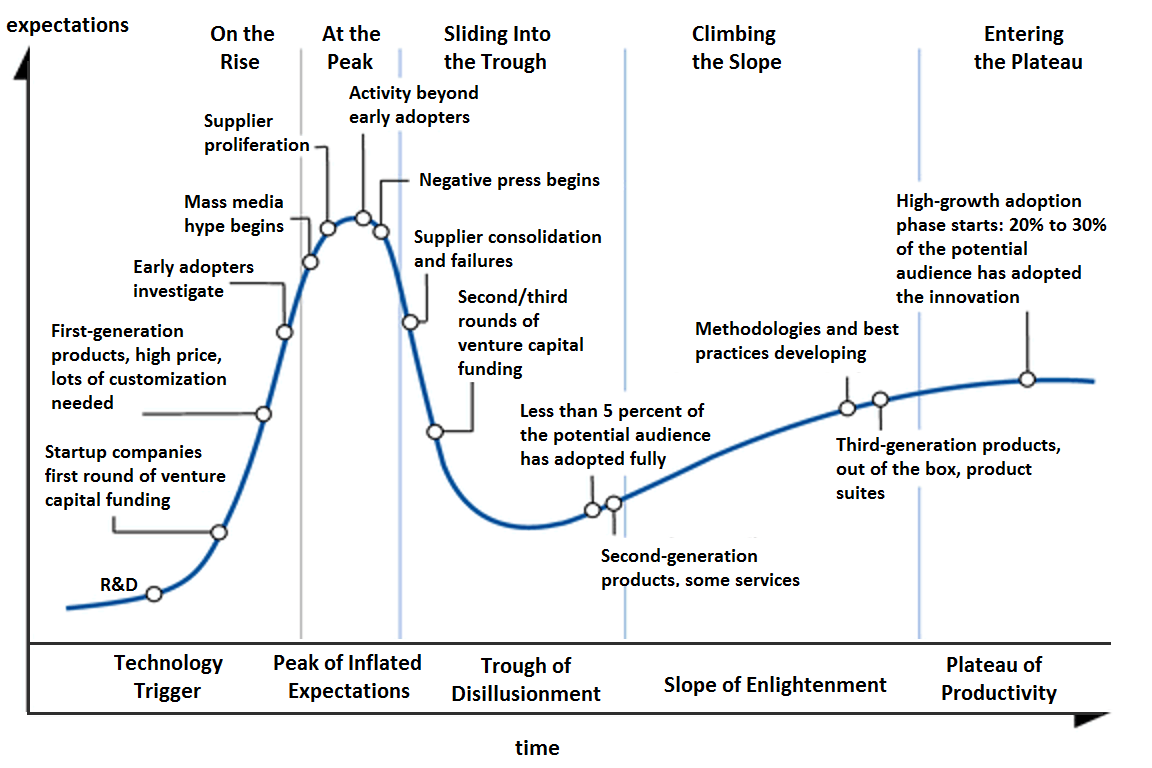
By NeedCokeNow - Own work, CC BY-SA 3.0, https://commons.wikimedia.org/w/index.php?curid=27546041
4. To collaborate, we need maps
Jose Lahoz-Monfort opened the Think Tank by taking stock on what's changed in the two years since we gathered at ICCB 2017 for the first Future of Conservation Tech Think Tank. From his perspective, we're seeing a new mindset emerge, with conservationists moving from being tech consumers to tech innovators.
"However, the time has come for the conservation community to move from being technology consumers to become innovation leaders and to actively seek to create novel technologies to provide conservation tools and solutions."
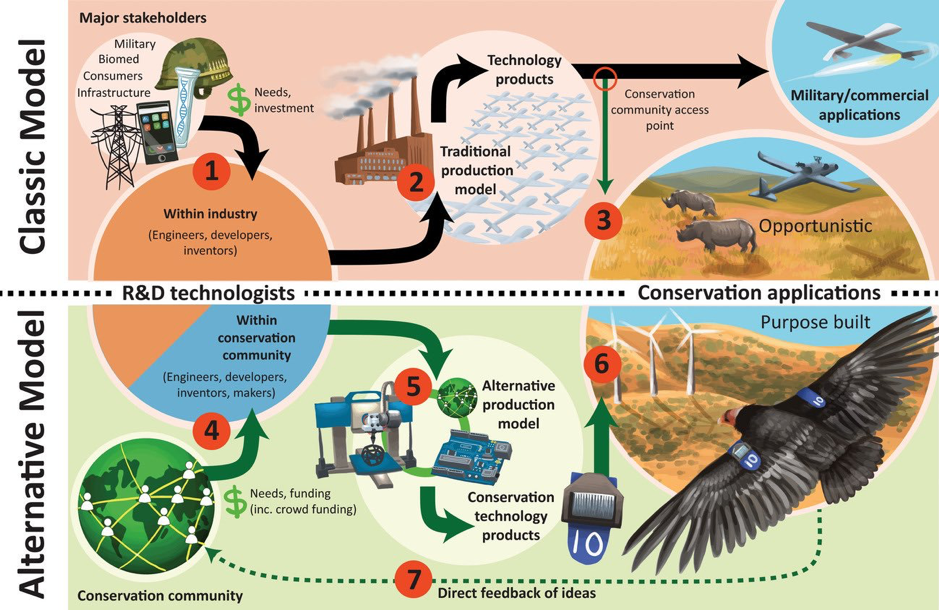
Read more: Beger-tal & Lahoz-Monfort (2018) Conservation letters.
It's a compelling call to action, but how do we get there? While the conservation tech ecosystem is maturing, it is still fragmented. It remains difficult to quickly and easily understand who is doing what in this space. This continues to result in unnecessary replication of effort and is a barrier for effectively engaging the tech sector to address gaps and needs.
The consensus was that there are two things needed that would help coordinate efforts so that we can work together more effectively:
1. Landscape map
The ongoing calls for an evolving landscape map is one we're conscious of - it came up in our Next Gen Tracking Virtual Meetup, I'm aware of a number of excel spreadsheets mapping out subsections of the ecosystem sitting on various computers, and most recently Hasita Bhammar from the World Bank's GWP put a call out in the community asking if such a thing was needed and/or already existed, with a view to creating a landscape map if didn't. So if you're interested in a landscape map, let's use Hasita's discussion as the place to move this work forward.
2. Technology roadmaps
Once we have a current landscape map, we can move on to building roadmaps describing the way forward for specific technologies. As Jose explains:
I initially “borrowed” the narrative of “technology roadmaps” from my experience at Nokia but it’s not a 100% accurate use of the term, since unlike large tech companies, “we” (as in “the conservation community”) are not a single entity planning the evolution of their products, but rather laying out an informed ‘wishlist’ of what the ecoacoustics (as an example) community would like to have and is technically feasible to achieve in the coming years. Despite this mismatch, I still think it’s a good term to use in our context.
Understanding a roadmap is required for each technology rather than conservation tech as a whole and that it sits separately to a landscape map was a big ah-ha moment for me, as I realised I'd been conflating landscape maps and roadmaps into the same overly-complicated mental visualisation. Theoretically, with these complimentary maps, we will have a path forward that captures the priority needs of users, gives an overview of what developments are on the horizon, and facilitates collaboration between small and large tech innovators so that we reduce replication of effort and deliver better tools for conservation.
An immediate first step is to share one or two examples of conservation tech roadmaps. From the discussions at ICCB there seem to be a few in draft form, so this shouldn't be too difficult to get posted. Ideally, from these we'll have a standard framework that can be used to build roadmaps for other technologies.

5. What do we need to do to shape the future of conservation tech?
Finally, a key output from the conference was a synthesis of priorities for Conservation Technology over the next two years, with the aim of focusing the efforts of the SCB Conservation Technology Working group, and others working in this space, on a set of practical actions to collaboratively deliver in the next two years. These were developed during an open discussion in the Think Thank, and then tested and refined with different groups throughout the conference.
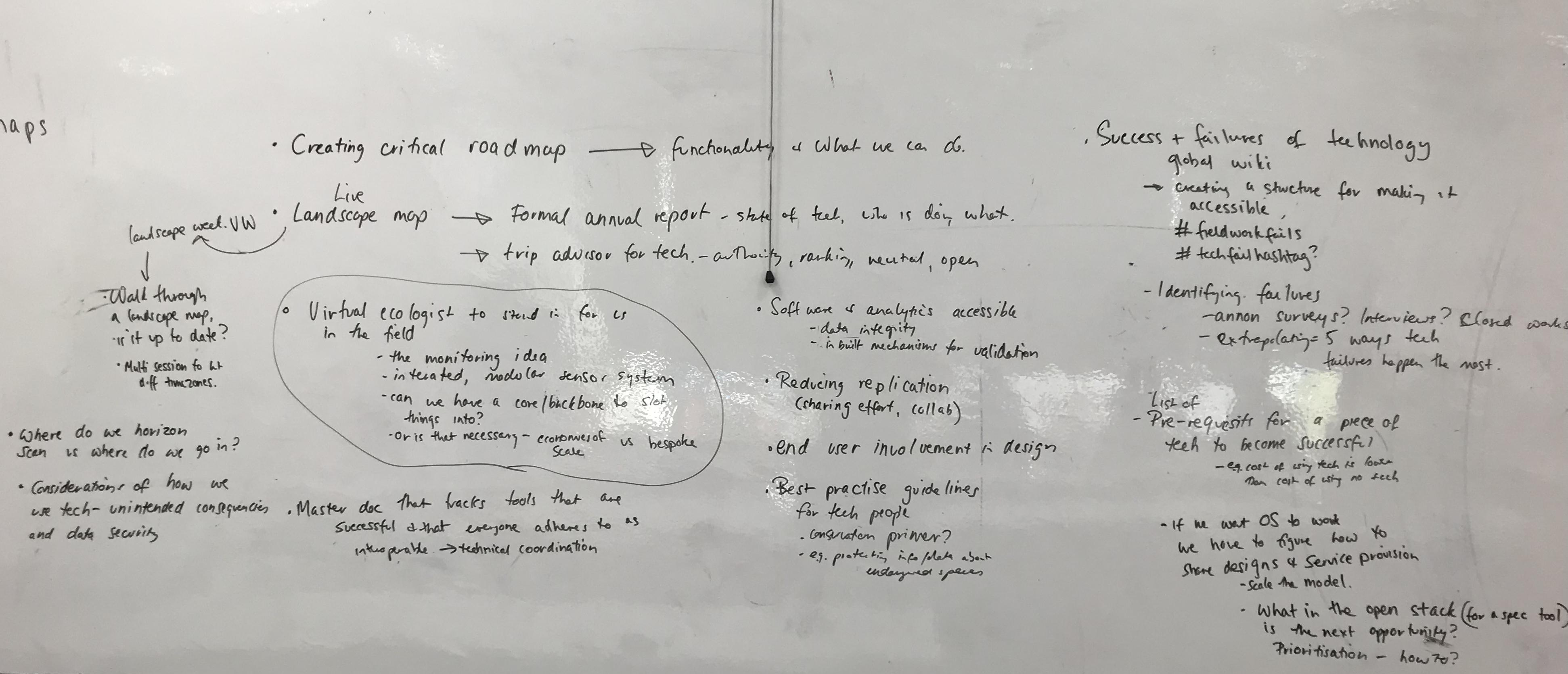
Initial idea dump from the discussion about future priorities at the Think Tank.
10 points for the next two years:
- Identify stories of success and failures of tech development and use
- Create technology roadmaps for technologies with impact in conservation
- Reduce replication
- Conservation primer to technologists wanting to collaborate
- Involving end users in design of tech tools
- Create a list of pre-requisites for successful tech development and use
- Landscape map – who is who in conservation technology
- Scaling the provision of critical services that support tech development
- Promoting open source technology: collaboration, trust, openness in sharing designs etc
- Where to sit in the spectrum of early – mature tech adopters?
The SCB Conservation Tech Working Group is keen to have feedback from the broader community shape these priorities, and will start a thread in the community (I will add a link when it's live) so you can share your ideas.
About the Author
Stephanie O'Donnell is the Community Manager of WILDLABS, the first global, open online community dedicated to conservation technology. Stephanie guides the WILDLABS community of conservationists, technologists, engineers and entrepreneurs, supporting them to find, create and deploy effective technology-based solutions to protect threatened wildlife and habitats.

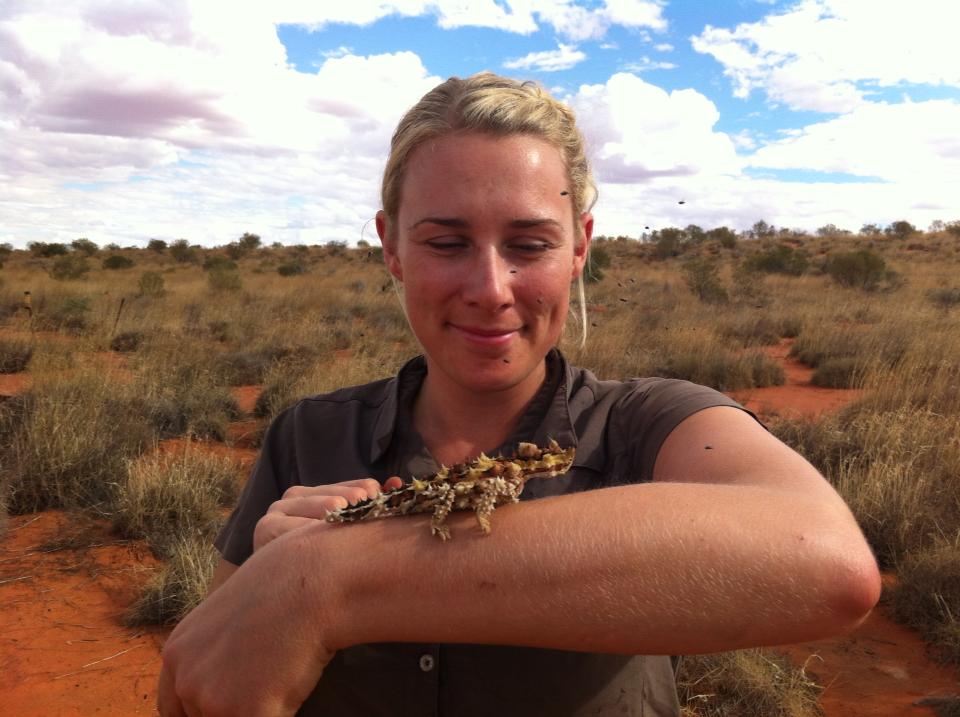
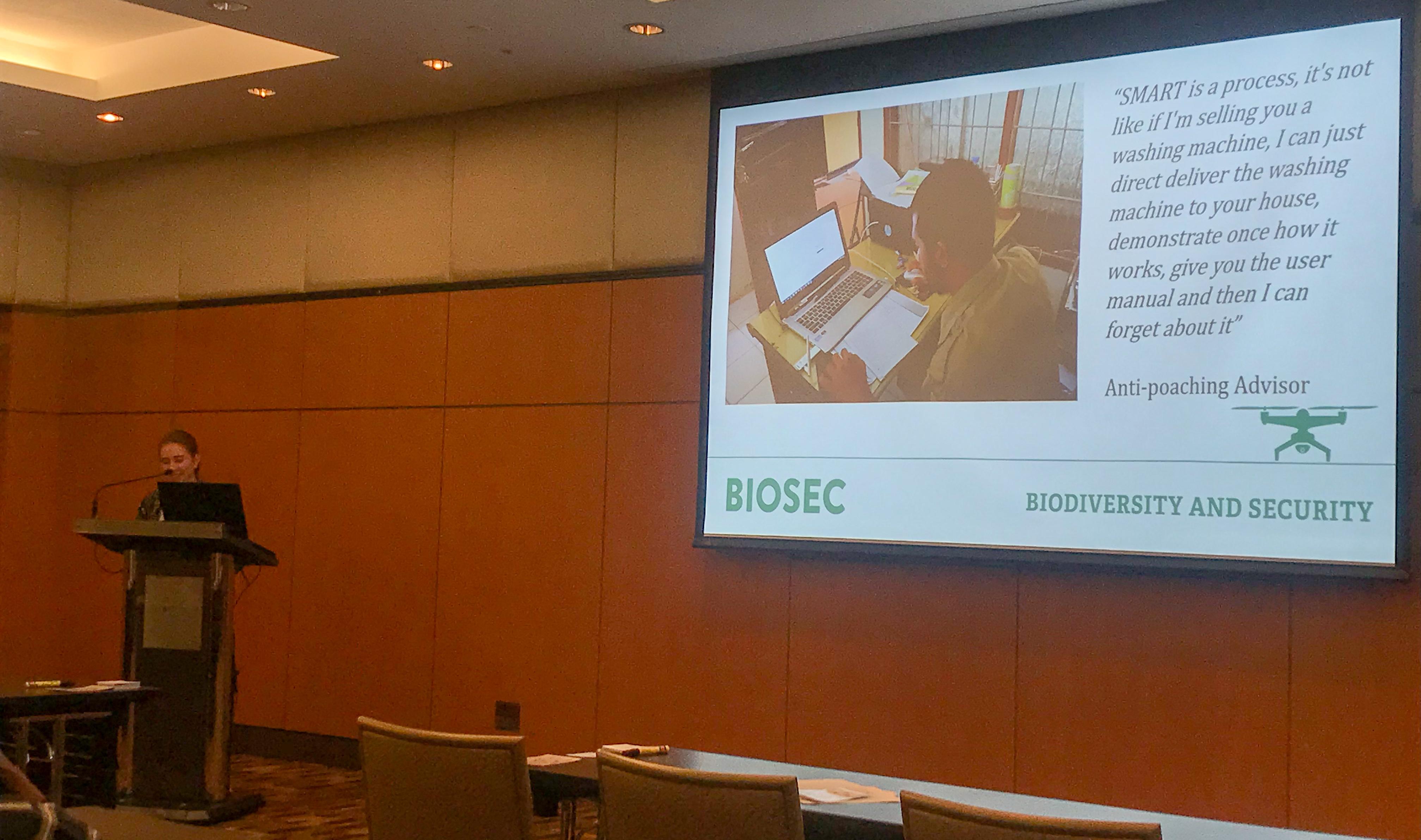
Add the first post in this thread.